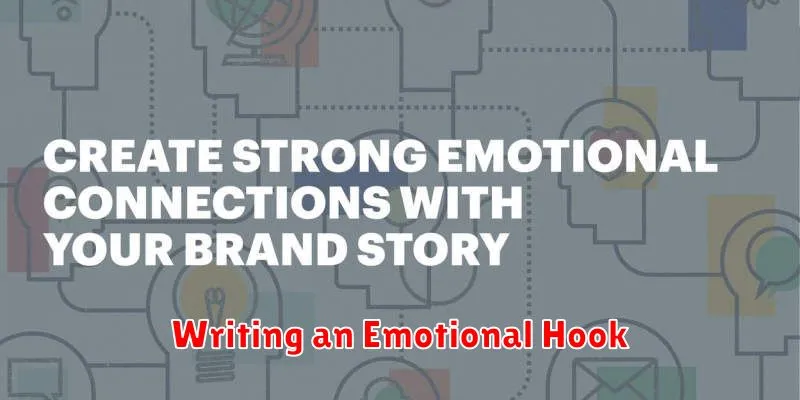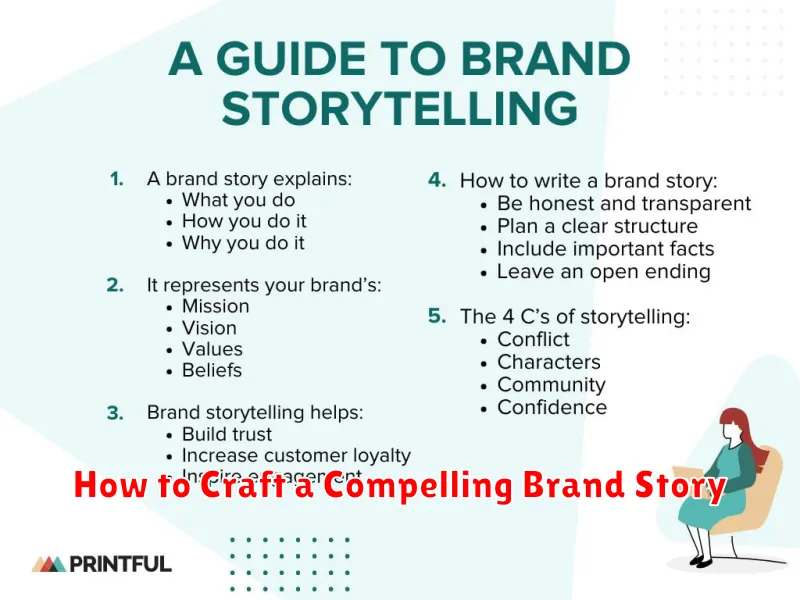In today’s saturated market, a compelling brand story is more critical than ever. It’s no longer enough to simply offer a quality product or service. Consumers connect with brands on an emotional level, and a well-crafted narrative can forge that crucial connection. This article explores how to craft a compelling brand story that resonates with your target audience, builds brand loyalty, and ultimately drives business growth. Learning how to craft a brand story is an essential skill for any business seeking to establish a strong brand identity and stand out from the competition. From understanding your brand values to identifying your target audience, we’ll cover the key elements needed to create a brand story that truly captivates.
Developing a compelling brand story is a strategic process that requires careful consideration of various elements. We will delve into the practical steps involved in crafting your brand narrative, from defining your brand’s mission and vision to identifying your unique brand voice. This guide will equip you with the knowledge and tools to create a brand story that not only informs but also inspires, transforming casual consumers into passionate brand advocates. By understanding how to effectively communicate your brand story, you can cultivate meaningful connections with your audience and build a brand that endures.
Why Brand Storytelling Matters
In today’s saturated market, simply offering a great product or service isn’t enough. Consumers crave connection. They want to understand the why behind a brand, its values, and its purpose. This is where brand storytelling comes into play.
Effective brand storytelling creates an emotional bond with your audience. By sharing authentic narratives, you can resonate with customers on a deeper level, fostering loyalty and trust. Stories make your brand relatable and memorable, differentiating you from competitors who solely focus on features and benefits.
Brand storytelling offers several key advantages:
- Increased Brand Awareness: Compelling stories are more likely to be shared and remembered.
- Enhanced Customer Engagement: Stories invite interaction and create a sense of community.
- Improved Brand Perception: Sharing your brand’s values through story builds trust and credibility.
- Stronger Customer Relationships: Stories forge emotional connections that lead to long-term loyalty.
Ultimately, brand storytelling helps humanize your brand, turning customers into advocates and driving business growth.
Finding Your Brand’s Voice
Discovering your brand’s voice is a crucial step in crafting a compelling brand story. It’s how you communicate your brand’s personality and values to your target audience. A distinct voice helps you stand out from competitors and build stronger connections with customers.
Consider these key elements when defining your brand voice:
- Tone: Is your brand playful, serious, formal, or informal?
- Language: What kind of vocabulary and sentence structure do you use?
- Personality: Think of your brand as a person. What are their characteristics?
Consistency is paramount. Once you establish your brand voice, maintain it across all platforms and communication channels. This creates a cohesive and recognizable brand experience for your audience.
Writing an Emotional Hook

A compelling brand story needs a strong emotional hook to capture the audience’s attention and resonate with them on a deeper level. This hook should be established early, ideally within the first few sentences or opening paragraph.
Emotion is the key. Think about what feelings you want your brand to evoke. Do you want to inspire hope? Create a sense of belonging? Elicit nostalgia? Focusing on a specific emotion will guide your writing and help you connect with your target audience.
Consider using storytelling techniques like anecdotes, personal experiences, or metaphors to create an emotional connection. A brief, relatable story can quickly draw readers in and make your brand more memorable.
Authenticity is crucial. The emotional hook must feel genuine and align with your brand’s values. Avoid clichés or exaggerated emotions. Instead, strive for honesty and vulnerability to build trust and create a lasting impression.
Integrating Story Across Channels

A compelling brand story loses its impact if it’s not consistently communicated across all platforms. Consistency is key to building brand recognition and trust. This means ensuring your narrative remains the same, whether a customer interacts with your brand on social media, your website, through email marketing, or in a physical store.
While the core message remains constant, the delivery should be tailored to each specific channel. For example, a concise, impactful message might be suitable for Twitter, whereas a longer-form narrative could work better on a blog post. Consider the strengths of each platform and adapt your storytelling accordingly.
Visual identity also plays a crucial role in cross-channel storytelling. Consistent use of logos, color palettes, and typography reinforces brand recognition and creates a cohesive experience for your audience. This creates a unified brand presence that resonates across platforms and strengthens the overall narrative.
Measuring Story Impact
Effectively measuring the impact of your brand story is crucial for understanding its resonance with your target audience and for informing future storytelling efforts. This involves looking beyond vanity metrics like social media shares and focusing on more substantial indicators.
Key metrics to consider include:
- Website Engagement: Track metrics like time spent on specific story-related pages, bounce rates, and scroll depth to gauge audience interest.
- Lead Generation: Analyze how your brand story contributes to lead generation. Does it drive sign-ups, inquiries, or demo requests?
- Brand Recall & Recognition: Conduct surveys or focus groups to assess how well your audience remembers and recognizes your brand story and its key messages.
- Sales Impact: While often difficult to directly correlate, monitor sales data for any upticks that coincide with the launch or promotion of your brand story.
- Sentiment Analysis: Utilize social listening tools to monitor online conversations and gauge the overall sentiment surrounding your brand and its story.
By consistently tracking these metrics, you can gain valuable insights into your story’s effectiveness and make data-driven adjustments to optimize its impact over time.

